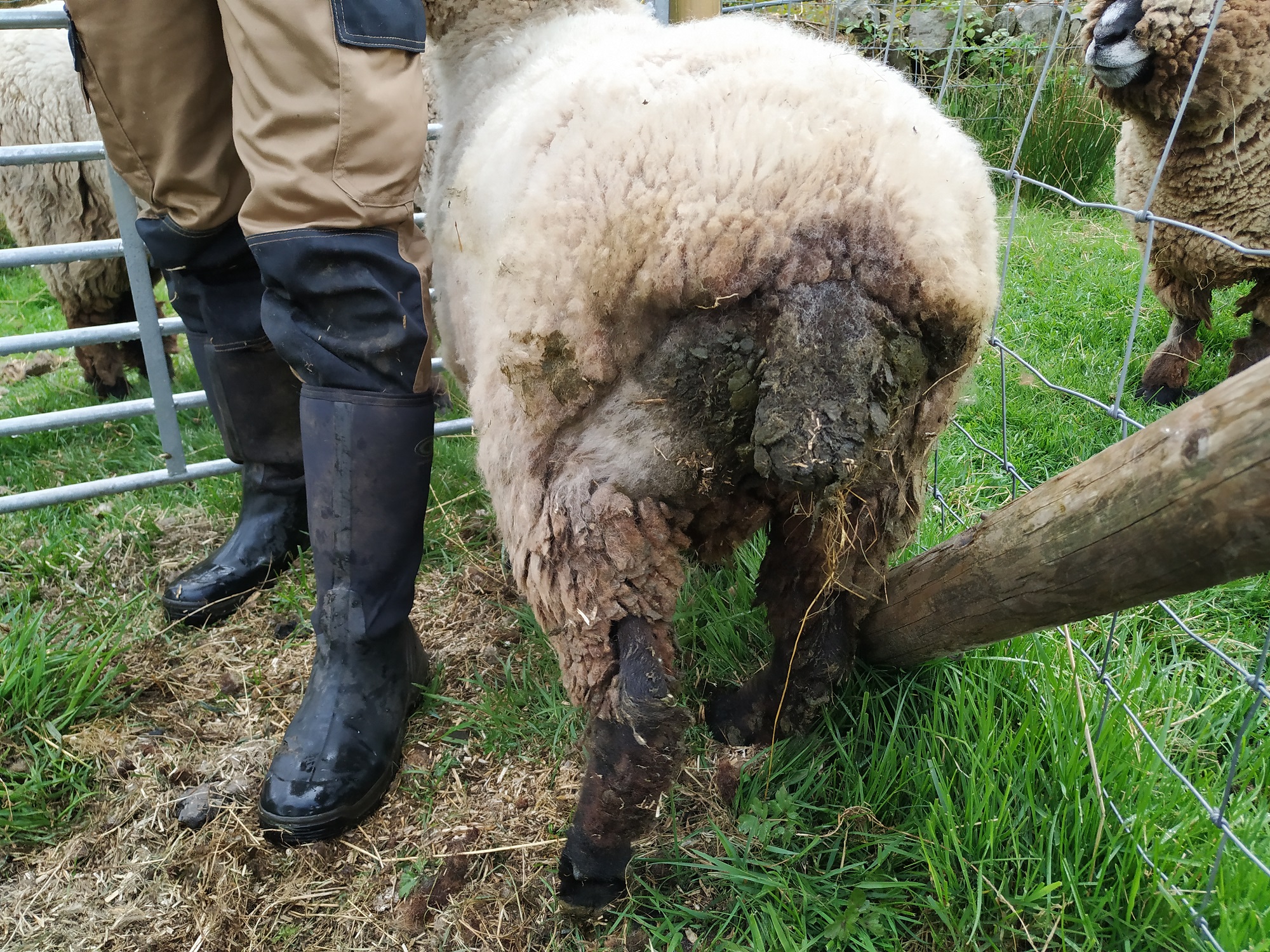
Sheep need a lot of looking after and one of the primary tasks is checking hooves and bottoms. Much like human fingernails and toenails, sheep’s hooves can grow and become uncomfortable. If not trimmed, infection can get in.
Dirty bottoms are a magnet for flies and the last thing you want is the blowfly laying eggs there. These eggs hatch into maggots which will eat the sheep alive. It’s called flystrike and it’s one of the reasons shearing is so important.
While we check our sheep 2 or 3 times a day, it also helps to take preventive measures and this means keeping the wool around the sheep’s bottom short and clean. It’s a process called dagging.
 First step was to get the sheep together and penned up. We bring them down to the lambing shed. It means they have shelter from sun or rain or both, as often happens here. While I get busy setting up sheep hurdles, Nicole goes and fetches them. These days, they follow happily.
First step was to get the sheep together and penned up. We bring them down to the lambing shed. It means they have shelter from sun or rain or both, as often happens here. While I get busy setting up sheep hurdles, Nicole goes and fetches them. These days, they follow happily.
Once in the shed, we construct a small treatment pen. You can’t see it from the photo, but it has a sliding entrance. In practice, that’s a hurdle we can shift sideways to make an entrance.
It’s all pretty calm and most of the sheep just wander in to the treatment pen when called. A couple need bribing with some sheep nuts and one, Bluemli, takes a bit more persuading – she is very wary of pens. We leave Bluemli till last.
It all went very smoothly. I helped keep the sheep calm while Nicole lifted each leg and checked the hooves. Sheep don’t mind their front legs being lifted, but can get a bit twitchy about their back legs losing contact with the ground. I find that if I distract them with neck scratches and soft words, they usually stay pretty calm through the whole process. Each sheep has its own particular sweet spot for a scratch. Find that and it all goes smoothly.
Then it’s a quick bottom check. If the bottom is dirty, it gets a clean and trim. After that, out that sheep goes, the sliding hurdle moves across and the next sheep wanders in.
 The ones already treated often hang around outside the pen seeking more tickles. That’s actually quite helpful as their proximity also has a calming effect on the sheep whose hooves are being inspected.
The ones already treated often hang around outside the pen seeking more tickles. That’s actually quite helpful as their proximity also has a calming effect on the sheep whose hooves are being inspected.
Bluemli, well she went from being a little wild eyed to settling, chewing the cud and then back to wild eyed when it was her turn. I grabbed a handful of sheep nuts, waved them in front of her nose and, to our astonishment, she trotted into the pen with me. Once in the pen, she was quite happy and let Nicole trim her hooves and check her bottom with no trouble at all.
A couple of hours well spent.





